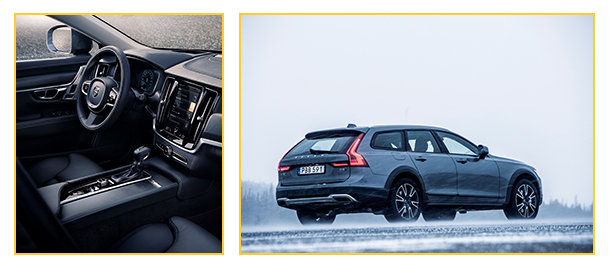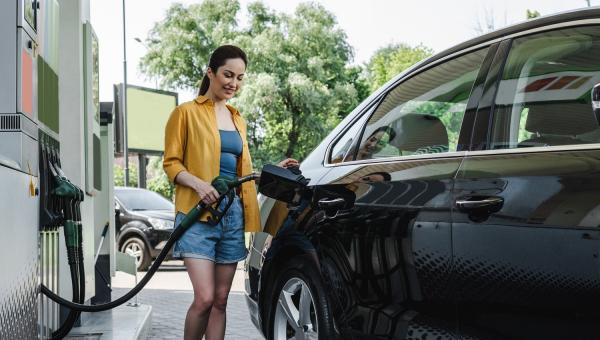Test Drive Notes Library
-
 Pros
Pros
- Looks. There are people who will buy this car just because of how good it looks. And yes, that is the first time anybody has said that about a Volvo.
- Comfort. The V90 XC is a particularly great highway cruiser and pretty good town schlepper, too. Except for some coarse engine noise (see below) the cabin is quiet, and wind noise is pretty much nonexistent. The ride is smooth and comfortable. The slightly raised XC puts the seat height at pretty-close-to-ass level for most people… which is nice for people who no longer feel like they're falling down into a car or climbing up into an SUV. The front seats are more comfortable than anything you sit in at home, and there is ample room both front and rear.
- Move over Audi. The interior is airy and Scandinavianly beautiful. It’s like stopping in that furniture store where you can’t afford anything. A huge sunroof provides day light to front and rear passengers. That’s just one of the reasons there will be fewer kayaks on top of this XC than there were on the previous model (the owners of this version won’t want to block the light or scratch the roof).
- Versatility. This is a pretty large wagon, about a foot longer than the XC70 it essentially replaces. It’s got four doors, with lots of room for four passenger and adequate room for a fifth. It has decent room for cargo behind the rear seats. When the rear seats fold down (easily, with the pull of a handle), there’s space for the golden retrievers and the antique dresser you picked up over the weekend in Hudson, NY. The only limitations compared to larger SUVs are the roof height, and the angled rear window, which cuts into cargo capacity at the tail end of the car.
- Versatility II. The V90 XC comes with all-wheel drive and increased ride height (including optional automatically adjusting rear air suspension). While it’s not designed to climb over boulders, elk, and tree stumps, it will get you through snow, sand, dirt, grass, and most other things that normal drivers encounter intentionally. In fact, we took it on vacation to a river, whose access road was a steep, uneven dirt road. We backed down the last, steep 100 yards to make it easier to get back up. A front-wheel-drive Chrysler minivan with us couldn’t make it out without assistance. The Volvo (in off-road mode) didn’t blink, and just buckled down and slowly climbed the hill without a fuss.
- Fuel economy. We got an outstanding 33 mpg on the highway in this large, luxury wagon. Around town, we did closer to 20 mpg, but ended up with a very respectable 27.5 mpg overall, doing more highway than city driving.
- Helpful technology. The optional heads-up display is a good one, showing you speed, speed limit (if you want it), emergency warnings, and navigation directions. All appear to be floating above the end of the hood as you drive, reducing your need to take your eyes off the road (unless you’re wearing polarized sun glasses). The lane-keeping assist will remind you just how bad a driver you are. The optional blind-spot alert should be standard, especially on a Volvo, and is a must-have accessory. We only wish the warning light (embedded in the side-view mirror) was a little more bold and visible. City and highway speed, automatic emergency braking offer peace of mind. The headlights swivel to illuminate where you’re turning. If you crash this car, it’s totally your fault, dude.
- Adaptive cruise control. Among the optional features is adaptive cruise control, which is a miracle worker for those who drive on crowded highways during rush hour, or live in California. We were on one of those highways where traveling speeds varied from 75 to 0, and covered everything in between. We simply set the adaptive cruise control to 75, set the distance we wanted to maintain between us and the vehicle ahead of us, and Volvo handled the acceleration and braking for two hours. It would go 75 when traffic was moving, it would slow down below that when necessary, and come to a complete stop when traffic halted. It did have a few non-human, and occasionally mildly scary attributes, — it would speed up on a clear road, even though you could see brake lights 300 yards ahead. It would then slow down in time, but a human (or a more sophisticated computer) would have trundled along knowing another slow down was coming.
- Touch Screen. Like all of the newer Volvos, the V90 XC has a very large, vertically oriented touch screen that controls almost everything. It’s like the iPad Venti. The screen itself is bright, clear, and easy to see. The primary functions (audio, navigation, temperature) are represented by stacked rectangles that expand when touched. Swipe right for more detailed media/audio controls, swipe left for settings. While it works logically, it requires you to take your eyes off the road, which is unfortunate. Luckily for you, automatic emergency braking and lane-keep assistance are standard.
-
 Cons
Cons
- The price will surprise previous Cross Country buyers, which is a concern, because some of them are old enough to have unstable angina. The previous XC wagon, the XC70, was a slightly upscale, comfortable, leather clad Volvo wagon. But it was really a workhorse. This new XC, the V90 XC, has more seriously luxury pretensions. And the price has gone up accordingly. We’ll have to see if people who willingly shelled out $45K for an XC 70 will fork over $60K for the new 90 (our well appointed test version listed for $64K). It’s a nicer, better-looking, larger, more up-to-date vehicle. But it’s now as much a show horse as a work horse.
- Engine noise. One of the only things that distracted us from the quiet luxury we were enjoying in the V90 was the coarse engine noise on acceleration. Volvo, in our T6 test version, uses a turbo-charged and super-charged four-cylinder engine. It gets a whopping 316 hp, and we never felt a lack of available power or anything but smooth shifts from the eight-speed transmission. But while the inside of the car was quiet when cruising, when you stepped on the gas, you could really hear the four-cylinder engine churning.
- Stop-start. The V90 comes with an automatic stop-start system that turns off the engine when you stop at a traffic light, and then restarts when you take your foot off the brake. Some manufacturers do this more smoothly than others. The Volvo’s system is on the less smooth side. About a quarter of the time, when it turned itself off momentarily, and you needed to take off again immediately, there was a small and annoying jolt. It needs more work, Volvo.
- The one inconvenience of the adaptive cruise control is that if traffic was completely stopped for more than five seconds or so, the Volvo required a tap of the gas pedal to resume moving under adaptive cruise control again. Yes, we realize that while the Volvo is miraculously doing the driving for us, we’re bitching because it occasionally requires us to tap on the gas pedal. Perhaps Volvo has some safety reason for having the adaptive cruise control function this way. But we found it to be an inconvenience.
- Very few hard buttons. The touchscreen handles most of the car’s functions, and requires you to take your eyes off the road. There’s a fair amount of scrolling and selecting required, and we found the audio controls difficult to use. There are some hard, dedicated buttons on the steering wheel, and a few under the touch screen, but you’ll be using the touch screen for most things other than volume up and down. I guess we should be thankful Volvo gave us a volume knob. Honda has recently deemed it an extravagance.
- The ignition switch sits on the console between the seats, for no apparent reason. It’s a squarish knob you turn, rather than a button your push. Even after a week of driving, we kept reaching for it on the dashboard, to the right of the steering column, where God intended it to be. I supposed you’d get used to it between the seats, but it doesn’t feel like an improvement.
Test Drive Notes Library
Get the Car Talk Newsletter
 Pros
Pros Cons
Cons


